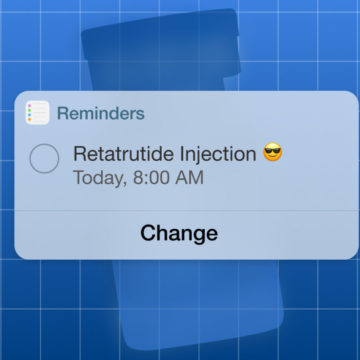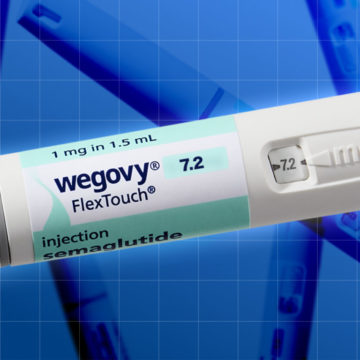If you’ve been looking for help with weight loss, you may have heard of injectable weight loss treatments, or GLP-1 agonists. Drugs like Mounjaro and Wegovy are popular options, designed to boost your weight loss alongside a healthy diet and regular exercise. But, it can be hard to know which one is the right treatment for you.
Our experts created this guide to help you learn more about these treatments, how they work and how they can help you reach your weight loss goals.
What are weight loss injections?
Weight loss injections contain drugs known as GLP-1 agonists. Here’s how they work:
- GLP-1 agonists mimic a natural hormone in your body: glucagon-like peptide 1 (GLP-1). It’s responsible for stimulating insulin production and reducing your blood sugar levels.
- The drugs bind to GLP-1 receptors, releasing insulin and regulating your blood glucose.
- Some also affect hunger and craving centres in your brain, making you feel satiated and reducing your appetite.
Popular weight loss injectables include: tirzapatide (Mounjaro), semaglutide (Wegovy) and liraglutide (Saxenda).
How do you take weight loss injections?
You self-inject these medications subcutaneously (which means just under the skin) into your thigh, upper arm or abdomen. Semaglutide is taken once a week, while liraglutide is a daily injection.
Weight loss injections are designed to be used as part of a broader weight management plan, not on their own. It’s essential that you make lifestyle changes, including eating a balanced diet and doing regular physical activity, while taking them.
Benefits of weight loss injections
The most obvious benefit of GLP-1 treatments is that they’re highly effective at helping you lose weight. Consistency is key with weight loss injectables, so it’s important to stick to your dosage plan to get the best results.
Because GLP-1 treatments mimic hormones that signal fullness, they also help curb hunger and slow the rate your stomach empties. This can help reduce cravings and make you feel satisfied. They can also help lower your blood pressure and cholesterol levels, improving cardiovascular health and reducing your risk of heart and kidney diseases.
Comparing GLP-1 weight loss injections
If you’re considering a GLP-1 weight loss injection, it’s helpful to know the difference between them, so you can find the right treatment for you.
Here’s a comparison of some popular choices:
| Mounjaro (tirzepatide) | Dosage: Weekly injection. Weight loss: Up to 20% of your body weight [1] |
| Wegovy (semaglutide) | Dosage: Weekly injection. Weight loss: Around 15% of your body weight, on average [2] |
| Saxenda (liraglutide) | Dosage: Daily injection. Weight Loss: Around 5-10% of your body weight over 1 year [3] |
How safe are injectables?
Semaglutide (Wegovy), tirzepatide (Mounjaro) and liraglutide (Saxenda) are approved for use in the UK. It’s vital that your treatment plan is prescribed and monitored by licensed clinicians to keep an eye on side effects and your overall health. At MedExpress, we support you at every step of your weight loss journey, and our clinical team checks in with you regularly to track your progress and answer any questions you have.
Are injectables more effective than weight loss pills?
Semaglutide is available in both injectable and pill form, and they’re almost equally effective.
In a 68-week trial, people taking semaglutide pills lost between 15.1% and 17.4% of their body weight, depending on how well they stuck to their plan. [4] Injectable semaglutide also helps people lose 15% of their body weight, on average. [2]
Depending on your lifestyle, you may find injectable weight loss treatments more convenient than pills. You only take semaglutide injections once a week, whereas pills are taken daily, before eating.
Side effects
Like all medications, weight loss injections like Mounjaro and Wegovy can cause some side effects. Here are some common symptoms you may experience:
- Nausea, vomiting, and diarrhoea, which typically settle as your body adapts to the medication.
- Stomach problems like heartburn and abdominal pain.
- Injection site reactions, such as irritation or redness.
Our clinical team can answer any questions you have about side effects, and offer support with managing them.
Who can use weight loss injections?
If you haven’t been able to lose weight through diet and exercise alone, a weight loss injection might be suitable for you.
You may be eligible to be prescribed one if:
- You have a BMI over 30.
- You have a BMI over 27 and weight-related health concerns, such as high blood pressure, pre-diabetes, heart disease and raised cholesterol.
GLP-1 agonists aren’t suitable for you if you’re pregnant or breastfeeding.
You also can’t be prescribed a GLP-1 agonist if you have:
- Type 1 diabetes
- Severe kidney or liver problems
- A personal or family history of thyroid cancers or certain genetic conditions
- An allergy to any of the ingredients
Speak to your GP before starting a weight loss treatment if you have a history of pancreatitis, serious digestive issues, diabetic retinopathy or kidney problems.
Choosing a weight loss treatment
With MedExpress, you can get an online consultation and regular check-ins to track your weight loss and manage your treatment plan.
Find out what treatment is suitable for you on our website.
References
[1] – https://www.nejm.org/doi/full/10.1056/NEJMoa2206038



